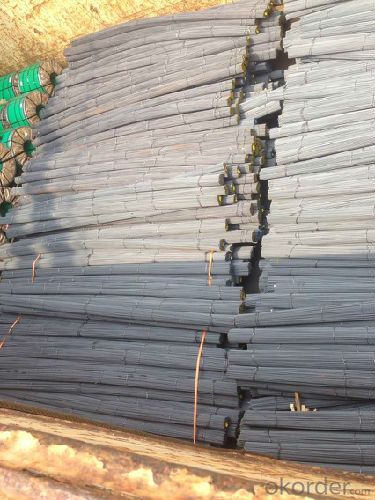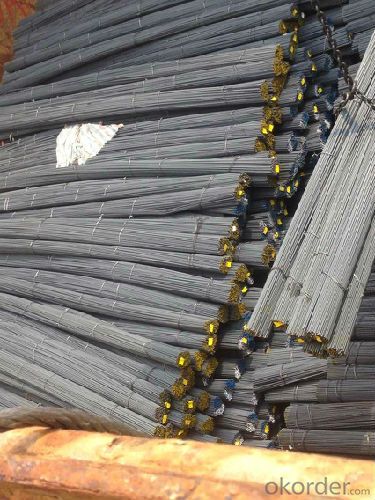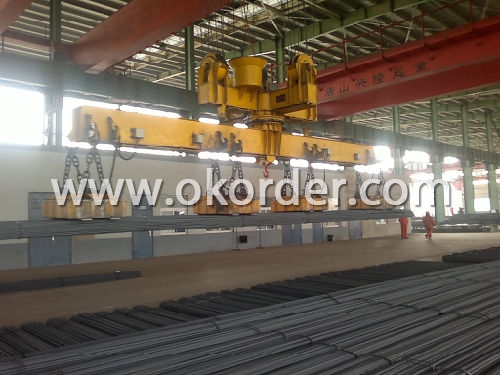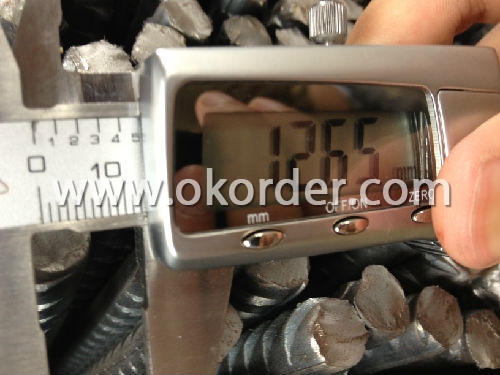Different Material Hot Rolled Dedormed Steel Rebar
- Loading Port:
- China main port
- Payment Terms:
- TT or LC
- Min Order Qty:
- 50 m.t.
- Supply Capability:
- 200000 m.t./month
OKorder Service Pledge
OKorder Financial Service
You Might Also Like
Specifications of Different Material Hot Rolled Dedormed Steel Rebar
Standard | GB | HRB500 | |
Diameter | 6mm,8mm,10mm,12mm,14mm,16mm,18mm,20mm, 22mm,25mm,28mm,32mm,36mm,40mm,50mm | ||
Length | 6M, 9M,12M or as required | ||
Payment term | TT or L/C | ||
Application | mainly used in construction industry to reinforce concrete structures and so on | ||
Quality | First quality, the goods are from Chinese big manufacturers. | ||
Type | Hot rolled deformed steel bar | ||
Brand name | DRAGON | ||
Chemical Composition of Different Material Hot Rolled Dedormed Steel Rebar
(Please kindly find our chemistry of our material based on HRB500 as below for your information)
Grade | Technical data of the original chemical composition (%) | ||||||
C | Mn | Si | S | P | V | ||
HRB500 | ≤0.25 | ≤1.60 | ≤0.80 | ≤0.045 | ≤0.045 | 0.08-0.12 | |
Physical capability | |||||||
Yield Strength (N/cm²) | Tensile Strength (N/cm²) | Elongation (%) | |||||
≥500 | ≥630 | ≥12 | |||||
Theoretical weight and section area of each diameter as below for your information:
Diameter(mm) | Section area (mm²) | Mass(kg/m) | Weight of 12m bar(kg) |
6 | 28.27 | 0.222 | 2.664 |
8 | 50.27 | 0.395 | 4.74 |
10 | 78.54 | 0.617 | 7.404 |
12 | 113.1 | 0.888 | 10.656 |
14 | 153.9 | 1.21 | 14.52 |
16 | 201.1 | 1.58 | 18.96 |
18 | 254.5 | 2.00 | 24 |
20 | 314.2 | 2.47 | 29.64 |
22 | 380.1 | 2.98 | 35.76 |
25 | 490.9 | 3.85 | 46.2 |
28 | 615.8 | 4.83 | 57.96 |
32 | 804.2 | 6.31 | 75.72 |
36 | 1018 | 7.99 | 98.88 |
40 | 1257 | 9.87 | 118.44 |
50 | 1964 | 15.42 | 185.04 |
Usage and Applications of Different Material Hot Rolled Dedormed Steel Rebar
Deformed bar is widely used in buildings, bridges, roads and other engineering construction. Big to highways, railways, bridges, culverts, tunnels, public facilities such as flood control, dam, small to housing construction, beam, column, wall and the foundation of the plate, deformed bar is an integral structure material. With the development of world economy and the vigorous development of infrastructure construction, real estate, the demand for deformed bar will be larger and larger..
Packaging & Delivery of Different Material Hot Rolled Dedormed Steel Rebar
Packaging Detail: products are packed in bundle and then shipped by container or bulk vessel, deformed bar is usually naked strapping delivery, when storing, please pay attention to moisture proof. The performance of rust will produce adverse effect.
Each bundle weight: 2-3MT, or as required
Delivery Detail: within 45 days after received advanced payment or LC.
Label: to be specified by customer, generally, each bundle has 1-2 labels
Trade terms: FOB, CFR, CIF
Picture of Different Material Hot Rolled Dedormed Steel Rebar



Note:
1. Our products are produced according to national standard (GB), if not, supply according to national standards (GB) or agreement as customer required.
2. Other Grade and Standard Deformed Steel Bar we can supply:
Grade: GR40/GR60, G460B/B500A/B500B/B500C,BST500S
Standard: ASTM, BS, DIN
The Minimum Order Quantity of these products is high, and need to be confirmed.
3. We can not only supply Deformed Steel Bar; if you need anything about building materials, please contact us for further information.
4. Please send us your detail specifications when inquire. We will reply to you as soon as possible. We sincerely hope we can establish a long stable business relationship.

Deformed Steel Bar in testing

- Q:How are steel rebars manufactured and processed?
- Steel rebars, also known as reinforcing bars, are manufactured and processed through a series of steps. The process begins with the melting of raw materials, such as iron ore and scrap metal, in a furnace to produce molten steel. This molten steel is then cast into billets or blooms, which are further processed through rolling mills to form long, thin rods with a specific diameter. These rods are then cut into desired lengths and undergo a process called quenching and tempering, which involves rapid cooling and reheating to enhance their strength and durability. Finally, the rebars are inspected, marked with identification numbers, and packaged for distribution to construction sites, where they are used to reinforce concrete structures.
- Q:What's the difference between rebar and thread steel?
- Physical and mechanical properties are different. Because of the different chemical composition and strength of reinforcing steel, they are different in physical and mechanical properties. The cold bending property of steel is good, can make the hook 180, screw steel can only make straight hook 90 degrees; steel weldability is good, with ordinary carbon steel electrode can be used to low alloy electrode; anti fatigue performance and toughness in steel bar is good.
- Q:Are steel rebars resistant to corrosion?
- Yes, steel rebars are generally resistant to corrosion due to the protective layer of oxide that forms on their surface. However, in certain environments or exposure to aggressive elements, corrosion can occur, leading to potential deterioration over time. To enhance their corrosion resistance, rebars can be coated or galvanized.
- Q:What are the different types of supports used for steel rebars in formwork?
- There are several different types of supports that can be used for steel rebars in formwork. Some common examples include chairs, spacers, bolsters, and hangers. These supports are designed to provide stability and ensure proper positioning of the rebars during concrete pouring and curing processes.
- Q:What are the guidelines for handling and disposing of steel rebars after demolition?
- To handle and dispose of steel rebars after demolition, the following guidelines should be followed: 1. Identify the steel rebars by appropriately marking or labeling them to distinguish them from other construction debris. 2. Separate the steel rebars from other waste materials on-site to ensure proper handling and recycling or disposal. 3. Take care during the demolition process to minimize damage to the steel rebars. Use suitable tools and techniques to avoid excessive bending or cutting, which can impact their recyclability. 4. Carefully remove the steel rebars from the site after demolition and transport them to the designated area for further processing or disposal. The method of removal and transportation will depend on the quantity and size of the rebars, and may involve machinery or manual labor. 5. Whenever possible, send the steel rebars to a recycling facility as they are highly recyclable. These facilities can process the rebars and convert them into new steel products, reducing the need for extracting and manufacturing new materials. 6. If recycling is not feasible, dispose of the steel rebars in accordance with local regulations. This may involve taking them to a designated landfill or waste disposal site that can handle construction materials. 7. Follow safety precautions when handling steel rebars, such as wearing appropriate personal protective equipment (PPE) like gloves and safety glasses. Additionally, use proper lifting techniques to prevent injuries. 8. Ensure compliance with local, state, and federal regulations for all handling and disposal activities. This may include obtaining necessary permits or licenses and adhering to specific waste management and recycling guidelines. By adhering to these guidelines, the handling and disposal of steel rebars after demolition can be conducted in an environmentally responsible and safe manner, contributing to sustainable construction practices.
- Q:Can steel rebars be used in the construction of residential complexes?
- Yes, steel rebars can be used in the construction of residential complexes. Steel rebars are commonly used in construction for their strength, durability, and ability to reinforce concrete structures. They provide structural stability and can support the weight of residential buildings, making them suitable for use in the construction of residential complexes.
- Q:Can steel rebars be used in foundation structures?
- Steel rebars are capable of being used in foundation structures. They are frequently employed in reinforced concrete foundations to heighten the structure's strength and endurance. By bolstering the concrete's tensile strength, steel rebars effectively reinforce it. This is especially crucial in regions where the foundation may encounter substantial loads or seismic activity. To distribute the load and prevent cracking or failure, the rebars are usually positioned in a grid pattern within the concrete. In conclusion, the stability and longevity of foundation structures largely depend on the inclusion of steel rebars as an indispensable component.
- Q:Are there any environmental concerns related to steel rebars?
- Yes, there are some environmental concerns related to steel rebars. The production of steel rebars involves the extraction of iron ore, which can lead to habitat destruction and deforestation. The manufacturing process also requires a significant amount of energy, contributing to greenhouse gas emissions. Additionally, steel rebars are typically coated with epoxy or other materials that contain harmful chemicals, posing risks to both human health and the environment during their production and use. Proper disposal and recycling of steel rebars are also important to minimize their environmental impact.
- Q:Are steel rebars suitable for high-rise buildings?
- Yes, steel rebars are highly suitable for high-rise buildings. Steel rebars provide excellent tensile strength and reinforcement to concrete structures, making them ideal for withstanding the heavy loads and stresses experienced in tall buildings. Additionally, steel rebars offer durability, flexibility, and cost-efficiency, making them a preferred choice in constructing high-rise buildings.
- Q:Can steel rebars be used in cold weather conditions?
- Yes, steel rebars can be used in cold weather conditions. Steel is known for its durability and strength, making it a suitable material for construction projects even in cold climates. However, it is important to take certain precautions when using steel rebars in cold weather. For instance, the rebars should be properly stored and protected from moisture to prevent rusting. Additionally, the concrete mix used with the rebars should be adjusted to ensure it can withstand freezing temperatures and avoid cracking. Overall, with proper planning and precautions, steel rebars can be effectively used in cold weather conditions.
1. Manufacturer Overview |
|
|---|---|
| Location | |
| Year Established | |
| Annual Output Value | |
| Main Markets | |
| Company Certifications | |
2. Manufacturer Certificates |
|
|---|---|
| a) Certification Name | |
| Range | |
| Reference | |
| Validity Period | |
3. Manufacturer Capability |
|
|---|---|
| a)Trade Capacity | |
| Nearest Port | |
| Export Percentage | |
| No.of Employees in Trade Department | |
| Language Spoken: | |
| b)Factory Information | |
| Factory Size: | |
| No. of Production Lines | |
| Contract Manufacturing | |
| Product Price Range | |
Send your message to us
Different Material Hot Rolled Dedormed Steel Rebar
- Loading Port:
- China main port
- Payment Terms:
- TT or LC
- Min Order Qty:
- 50 m.t.
- Supply Capability:
- 200000 m.t./month
OKorder Service Pledge
OKorder Financial Service
Similar products
New products
Hot products
Related keywords





























